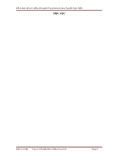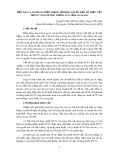
Open Access
Available online http://ccforum.com/content/10/1/R1
Page 1 of 10
(page number not for citation purposes)
Vol 10 No 1
Research
Correlation of procalcitonin and C-reactive protein to
inflammation, complications, and outcome during the intensive
care unit course of multiple-trauma patients
Michael Meisner1, Heide Adina2 and Joachim Schmidt3
1Department of Anaesthesiology and Intensive Care Medicine, Hospital Dresden Neustadt, Industriestrasse 40, D-01129 Dresden, Germany
2Department of Anaesthesiology and Intensive Care Therapy, Friedrich Schiller University Jena, Erlanger Allee 101, D-07740 Jena, Germany
3Department of Anaesthesiology and Intensive Care Therapy, University of Erlangen-Nuremberg, Krankenhausstrasse 12, D-91054 Erlangen,
Germany
Corresponding author: Michael Meisner, michael.meisner@khdn.de
Received: 28 Jun 2005 Revisions requested: 2 Aug 2005 Revisions received: 26 Sep 2005 Accepted: 20 Oct 2005 Published: 24 Nov 2005
Critical Care 2006, 10:R1 (doi:10.1186/cc3910)
This article is online at: http://ccforum.com/content/10/1/R1
© 2005 Meisner et al.; licensee BioMed Central Ltd.
This is an open access article distributed under the terms of the Creative Commons Attribution License (http://creativecommons.org/licenses/by/2.0),
which permits unrestricted use, distribution, and reproduction in any medium, provided the original work is properly cited.
Abstract
Background A comparison of the amount of and the kinetics of
induction of procalcitonin (PCT) with that of C-reactive protein
(CRP) during various types of and severities of multiple trauma,
and their relation to trauma-related complications, was
performed.
Methods Ninety adult trauma patients admitted to the intensive
care unit of our tertiary care hospital were evaluated in a
prospective case study. During the initial 24 hours after trauma
the Injury Severity Score, the Sepsis-related Organ Failure
Assessment score, and the Acute Physiology and Chronic
Health Evaluation II score were evaluated. PCT, CRP, the sepsis
criteria (American College of Chest Physicians/Society of
Critical Care Medicine definitions), and the Sepsis-related
Organ Failure Assessment score were measured at days 1–7,
as well as at days 14 and 21, concluding the observation period
with the 28-day survival.
Results The induction of PCT and CRP varied in patients
suffering from trauma. PCT increased only moderately in most
patients and peaked at day 1–2 after trauma, the concentrations
rapidly declining thereafter. CRP ubiquitously increased and its
kinetics were much slower. Complications such as sepsis,
infection, blood transfusion, prolonged intensive care unit
treatment, and poor outcome were more frequent in patients
with initially high PCT (>1 ng/ml), whereas increases of CRP
showed no positive correlation.
Conclusion In patients with multiple trauma due to an accident,
the PCT level provides more information than the CRP level
since only moderate amounts of PCT are induced, and higher
concentrations correlate with more severe trauma and a higher
frequency of various complications, including sepsis and
infection. Most importantly, the moderate trauma-related
increase of PCT and the rapidly declining concentrations
provide a baseline value near to the normal range at an earlier
time frame than for CRP, thus allowing a faster and more valid
prediction of sepsis during the early period after trauma.
Introduction
Multiple-trauma patients are especially prone to develop com-
plications such as infections and sepsis. Since clinical symp-
toms and conventional markers are not always reliable signs
for the diagnosis of sepsis and infection, biomarkers such as
procalcitonin (PCT) or C-reactive protein (CRP) are often
used as a diagnostic tool in these patients. Multiple-trauma
patients, however, similar to patients undergoing elective sur-
gery, may show an increase of PCT, CRP, and other biomole-
cules, indicating inflammation, during the early postoperative
or post-traumatic period independent of the diagnosis of sep-
sis or infection [1-4].
Several studies previously described the kinetics and the
amount of PCT induced after elective surgery and trauma [1,3-
8]. The induction of PCT and CRP after surgery has been
APACHE II = Acute Physiology and Chronic Health Evaluation II; CRP = C-reactive protein; ICU = intensive care unit; IL = interleukin; ISS = Injury
Severity Score; PCT = procalcitonin; SIRS = systemic inflammatory response syndrome; SOFA = Sepsis-related Organ Failure Assessment.

Critical Care Vol 10 No 1 Meisner et al.
Page 2 of 10
(page number not for citation purposes)
described quite well in the meantime: PCT levels increase far
less than CRP levels, and the period of unspecific induction is
much shorter [1,7]. The PCT parameter is therefore the better
choice to diagnose sepsis and infection early after surgery.
Data on CRP induction after multiple trauma are scarce, how-
ever, and provide no detailed data on the induction of this pro-
tein at various severity levels and types of trauma as compared
with PCT [3,9].
The aim of this study was to describe the amount of and the
time course of PCT and CRP induction in patients with various
types of and severities of high-velocity trauma. We further reg-
istered trauma-related complications (for example, sepsis,
infection, blood transfusion, organ dysfunction), as described
by the Sepsis-related Organ Failure Assessment (SOFA)
score, the Acute Physiology and Chronic Health Evaluation II
(APACHE II) score, the duration of stay in the intensive care
unit (ICU), and the overall outcome.
Patients and methods
After approval by the local ethics committee, all patients with
physical trauma due to an accident admitted to the ICU of our
tertiary health care institution between May 1998 and April
2000 were prospectively included in the study. Inclusion crite-
ria included age older than 16 years and survival for at least 12
hours. No chemical or burn trauma patients were included.
Patients underwent surgical treatment when necessary for
blood loss, wound treatment, or bone fractures according to
accepted standards of care. PCT, CRP, all clinical, microbio-
logical, and laboratory data, and all diagnostic and therapeutic
options were registered. The data analyzed included data col-
lected once during admission: age, gender, chronic condi-
tions, severity of trauma according to the Injury Severity Score
(ISS) [10], the APACHE II score [11], and number of blood
products infused within the initial 24 hours after trauma. Also
analyzed were data collected each day for 7 days, and on days
14 and 21 of treatment in the ICU: PCT, CRP, clinical evi-
dence and laboratory data of infection, microbiological find-
ings, clinical suspicion of infection, and the duration of
treatment on the ICU, as well as the data necessary to evaluate
the SOFA score [12]. Complications included the diagnosis of
infection, systemic inflammation, the various stages of sepsis
according to American College of Chest Physicians/Society
of Critical Care Medicine criteria [13], and the occurrence of
organ dysfunction. The final data analyzed were 28-day sur-
vival data.
The type of and severity of trauma was classified according to
the ISS. Severe trauma was assumed at ISS ≥20 according to
the consensus of previous publications [10,14]. Infection was
diagnosed if microbiological cultures obtained from the
patients at possible sites of infection were positive (proven
infection) or if clinical signs of infection were evident. 'Sus-
pected infection' was stated when the treating physician sus-
pected a bacterial infection but no positive microbiological
result was obtained (patients with proven infection are
included in this group). Pneumonia was diagnosed if radiolog-
ical signs of pneumonia (infiltration) on chest X-ray and at least
one of the following two criteria were present: leukocytosis
>12,000 × 109/l or <4,000 × 109/l, or body temperature
>38°C or <36°C. Blood transfusions were given until the
patient was hemodynamically stable or until hemoglobin val-
ues exceeded 8.0 g/dl, according to local guidelines.
The PCT level was measured by the Lumitest®PCT luminomet-
ric assay (B.R.A.H.M.S. AG, Berlin-Hennigsdorf, Germany)
and the CRP level was measured using a nephelometric assay
(Boehringer, Mannheim, Germany) [15]. The functional assay
sensitivity of the Lumitest®PCT is 0.3 ng/ml. PCT concentra-
tions were expressed as initial peak levels according to their
maximum concentrations on day 1 or day 2 after trauma, and
the CRP concentrations were from day 1 to day 3 after trauma
due to the slower CRP induction kinetics.
Table 1
Patient characteristics and infection markers early after minor or major severe mechanical trauma
Injury Severity Score <20 Injury Severity Score ≥20 P, Mann–
Whitney U test
Group characteristic 31 patients; Injury Severity Score, 14 ±
4
59 patients; Injury Severity Score, 30 ±
9
Age (mean ± standard deviation) 28 ± 14 31 ± 17 >0.9
Gender (male/female) 21/10 40/19 >0.9
Lethal outcome (n)015<0.01
Initial procalcitonin (0–48 hours)
(median, quartiles) (ng/ml)
0.52 (<0.3 to 1.1) 2.43 (0.79–5.16) <0.01
Initial C-reactive protein (0–72 hours)
(median, quartiles) (mg/l)
126 (65–151) 120 (82–169) <0.17

Available online http://ccforum.com/content/10/1/R1
Page 3 of 10
(page number not for citation purposes)
The initial ISS categorizes the type of and severity of trauma
according to a system of points based on injury to six regions
of the body [10]. The ISS is defined as "the sum of the square
of the highest points in each of the three most severely injured
areas". The following regions are scored according to a scale
of 0 (no injury) to 6 (major injury): head/neck, face, thorax,
abdomen, extremities, and external wounds.
Statistical analysis
Statistical evaluation was carried out using the program SPSS
10.0 for Windows. Variables were defined as the median and
upper and lower quartiles. When Kruskal–Wallis analysis indi-
cated a significant difference among groups, the Mann–Whit-
ney U test was used to compare the groups. Correlations were
calculated by the Spearman rank correlation. Increased risk
was calculated by the odds ratio, and significance was tested
by the chi-square test. The area under the curve of the receiver
operating characteristic was calculated and plotted by SPSS
10.0. Statistical comparison between the area under the curve
of the various parameters was calculated using the method
developed by Hanley and McNeil [16], in which z > 1.96 indi-
cates a level of significance or an alpha error less than 5%. The
McNemar test was used for comparison of sensitivity and spe-
cificity among parameters and scores at a given cutoff point.
Statistical significance was accepted for P < 0.05. A Bonfer-
roni correction was calculated for each group of comparisons.
Results
Patient characteristics
Out of 102 patients with accidental high-velocity multiple
trauma, 90 met the inclusion criteria during the study period.
Twelve of the initially evaluated patients could not be followed
up because of a fatal outcome within 12 hours. The median
age was 34 years (range, 16–84 years; 29 female patients, 61
male patients). Eighty-four patients (93%) were traumatized
due to motor vehicle accidents, whereas six patients (7%)
suffered from trauma following a fall from a greater height. The
ISS ranged between 5 and 50 (median, 24.5), and the dura-
tion of ICU treatment averaged 12 days (median, 8 days;
range 1–28 days). Further baseline characteristics for the
patients are presented in Table 1.
Induction of PCT and CRP after trauma
The PCT concentration was increased above the normal levels
of 0.5 ng/ml in 71% of the patients on day 1 or day 2 after
trauma. Peak concentrations occurred on day 1 in 56% of the
patients and on day 2 in another 26% (Figure 1). The highest
concentration of PCT measured was 18.7 ng/ml. In compari-
son, the time course of CRP induction was slower. Peak con-
centrations occurred only in 9% of the patients on day 1 after
trauma, in 24% of the patients on day 2, and in 23% of the
patients on day 3. Even on day 4 after trauma the peak levels
of CRP were reached in another 15% of the patients. Initial
CRP levels increased above 10 mg/l in 98% of patients, and
81 patients (90%) developed CRP levels above 50 mg/l. Con-
centrations did not exceed 365 mg/l during severe trauma.
Figure 1
Histogram of the day of maximum concentrations of procalcitonin (PCT) and C-reactive protein (CRP) in multiple-trauma patientsHistogram of the day of maximum concentrations of procalcitonin (PCT)
and C-reactive protein (CRP) in multiple-trauma patients.
Figure 2
Serum levels of procalcitonin (PCT) and C-reactive protein (CRP) in patients with multiple traumaSerum levels of procalcitonin (PCT) and C-reactive protein (CRP) in
patients with multiple trauma. Time course of induction (median,
quartiles).

Critical Care Vol 10 No 1 Meisner et al.
Page 4 of 10
(page number not for citation purposes)
PCT concentrations declined more rapidly than those of CRP
(Figure 2). On day 7 after trauma, the PCT level was within the
normal range in 88% of the patients while the CRP level was
within the normal range in only 6% of the patients.
Influence of type of and severity of trauma
The majority of the patients presented with multiple trauma of
various regions of the body. Seven patients were injured in
only one or two regions, 25 patients in three regions, 35
patients in four regions, and 23 patients in five or more
regions. PCT and CRP concentrations according to the region
of injury are summarized in Table 2. There was no statistical
difference in PCT levels between the specific trauma patterns;
however, patients with abdominal trauma obviously presented
with somewhat higher PCT levels (P = 0.004, corresponding
to an adjusted alpha error of 6.5% for multiple comparisons).
Eighty-five percent of the patients underwent surgical proce-
dures during the initial observation period (days 1–2 after
trauma). Initial PCT and CRP levels were similar in patients
undergoing early surgery and those with no or late surgery.
PCT concentrations, but not CRP levels, correlated with the
number of blood units given on the initial day of trauma (r =
0.61, P < 0.001 and r = 0.20, P = 0.055, respectively).
Accordingly, PCT concentrations were significantly lower in
patients who had moderate blood loss (≤2 units blood trans-
fused, PCT = 0.64 ng/ml) as compared with those with major
blood loss (> 2 units transfused, PCT = 3.05 ng/ml, median;
P < 0.001).
When patients were categorized into those with moderate or
severe trauma (ISS <20 or ≥20), the initial PCT but not CRP
was significantly higher in patients with severe trauma (P <
0.001 and P <0.177, respectively) (Table 1). Nevertheless,
the initial PCT peak concentrations (day 1 or 2) correlated only
weakly with the ISS (r = 0.416, P < 0.001), and the CRP con-
centrations (day 1–3) did not correlate at all with the ISS (r =
0.112, P = 0.295).
Duration of ICU treatment and outcome
Patients with high PCT levels early after trauma were treated
for a longer period of time in the ICU than those who initially
presented with low PCT values. In the case of PCT levels
greater than 2.5 ng/ml (day 1 or 2 after trauma) the average
duration of treatment in the ICU was 17 (± 13) days, as com-
pared with 5 (± 4) days in those with PCT < 0.5 ng/ml (P <
0.001). However, there was no distinct arithmetical correlation
between both parameters (r = 0.500, P < 0.01).
Fifteen of the 90 patients analyzed died within 28 days after
trauma, all following severe trauma according to an ISS of 27–
50 (median, 41). The PCT, but not CRP, concentrations dur-
ing the first week after trauma were significantly higher in non-
survivors as compared with those in survivors (Figures 3 and
4). During the course of treatment, the difference among
groups at the end of the first week even increased from double
to 15-fold in patients with fatal outcome compared with in sur-
vivors. At a cutoff value of 0.8 ng/ml for the initial PCT concen-
tration, the probability of survival was 94% (negative predictive
Table 2
Induction of procalcitonin (PCT) and C-reactive protein (CRP) according to the region of injury, defined by the Injury Severity Score
Region of injury Number of patients with
injury in this region
Median (10th–90th percentiles) P (exact
significance, two-
tailed)
Injury in the respective
region
No injury in the respective
region
Head 67/90 PCT(ng/ml) 1.3 (0.1–6.68) 0.9 (0.1–5.2) 0.562
CRP(mg/l) 115 (37–197) 121 (54–220) 0.762
Face 47/90 PCT(ng/ml) 1.0 (0.1–7.89) 1.4 (0.1–5.4) 0.976
CRP(mg/l) 109 (19–206) 121 (56–193) 0.621
Thorax 72/90 PCT(ng/ml) 1.31 (0.1–6.4) 0.75 (0.1–5.0) 0.121
CRP(mg/l) 115 (32–194) 136 (72–222) 0.189
Abdomen 44/90 PCT(ng/ml) 2.32 (0.1–12) 0.67 (0.1–5.0) 0.004
CRP(mg/l) 136 (41–217) 107 (36–173) 0.080
Extremities 71/90 PCT(ng/ml) 1.3 (0.1–6.46) 0.85 (0.1–5.0) 0.573
CRP(mg/l) 120 (48–186) 97 (11–226) 0.358
Surface 45/90 PCT(ng/ml) 1.03 (0.1–6.0) 1.56 (0.1–7.0) 0.792
CRP(mg/l) 120 (43–178) 120 (14–220) 0.584

Available online http://ccforum.com/content/10/1/R1
Page 5 of 10
(page number not for citation purposes)
value) but the positive predictive value for lethal outcome was
only 24%. Among the 15 patients with lethal outcome, nine
patients died from septic shock and six patients from severe
head injury. The median initial PCT concentration (quartiles) of
the septic group was 4.25 (2.05–8.3) ng/ml and that of the
head injury group was 1.98 (0.63–3.94) ng/ml (P = 0.49). The
median ISS were 41 and 50, respectively. In contrast, CRP
concentrations during the first week showed no differences
between survivors and nonsurvivors.
Role of infection
In the present study, infection was suspected in 49 of the 90
patients and was proven in 40 patients during the 21-day
observation period. Positive microbial findings were derived
from pneumonia in 31 cases, from positive blood cultures in
10 patients, from colitis in 10 patients, and from wound and
fungal infections in four patients. Five patients had urinary tract
infections (multiple microbiological findings). On average,
infections occurred 6 ± 3 days (mean ± standard deviation)
after the trauma. Initial PCT levels (days 1 and 2 after trauma)
were significantly higher in patients who subsequently devel-
oped infections: 2.69 ng/ml versus 0.54 ng/ml (median, P <
0.001) for suspected infection versus no suspected infection,
and 3.01 ng/ml versus 0.57 ng/ml for proven infection versus
no proven infection (P < 0.001). Initial CRP concentrations
(days 1–3) did not significantly differ in patients developing a
proven infection (109 mg/l versus 136 mg/l, P = 0.028; not
significant according to multiple comparisons) or in patients in
whom infection was suspected (109 mg/l versus 122 mg/l, P
= 0.163; not significant according to multiple comparisons).
For a PCT value ≥1 ng/ml the odds ratio for the development
of an infection was 6.1 (95% confidence interval, 2.4–15.7).
The duration of treatment on the ICU was also different in
patients with diagnosis of infection as compared with in those
without. On average, patients without an infection were
treated in the ICU for 6 ± 4 days (mean ± standard deviation),
as compared with 20 ± 12 days for those who had an infection
(P < 0.05). Among patients without an infection only 16 out of
50 patients (30%) were treated on the ICU for more than 7
days, as compared with 38 out of 40 patients (95%) in whom
an infection had developed. Similarly, PCT concentrations on
day 7 were significantly higher in patients who had an infec-
tion, compared with those without an infection: 0.64 ng/ml
(median, quartiles 0.1–8.35) versus <0.3 ng/ml (median, quar-
tiles 0.1–0.57) (P < 0.001, Mann–Whitney U test). CRP con-
centrations did not significantly differ at this time point (132
mg/l and 90 mg/l, P = 0.052).
Development of sepsis
Sepsis, severe sepsis, or septic shock was also more fre-
quently diagnosed during the observation period in patients
who initially developed higher PCT levels. On the contrary, the
level of the initial CRP concentration was not related to this
diagnosis (Figure 5). For example, the initial PCT median
(quartiles) concentration in patients who did not develop sys-
temic inflammatory response syndrome (SIRS) or sepsis dur-
ing their whole course was 0.53 ng/ml (<0.3 to 0.98 ng/ml),
compared with those who did develop SIRS (0.77 ng/ml, <0.3
Figure 3
Course of procalcitonin (PCT) (median, quartiles) during the first week after trauma in nonsurvivors (n = 15) and in survivors (n = 75)Course of procalcitonin (PCT) (median, quartiles) during the first week
after trauma in nonsurvivors (n = 15) and in survivors (n = 75). *P <
0.05, Mann–Whitney U test.
Figure 4
Course of C-reactive protein (CRP) (median, quartiles) during the first week after trauma in nonsurvivors (n = 15) and in survivors (n = 75)Course of C-reactive protein (CRP) (median, quartiles) during the first
week after trauma in nonsurvivors (n = 15) and in survivors (n = 75).

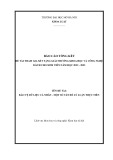
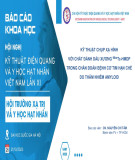

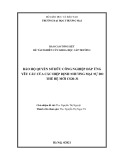
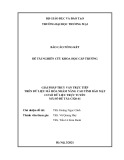
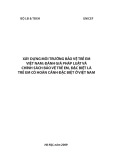
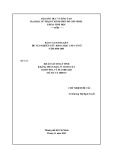
![Vaccine và ứng dụng: Bài tiểu luận [chuẩn SEO]](https://cdn.tailieu.vn/images/document/thumbnail/2016/20160519/3008140018/135x160/652005293.jpg)
